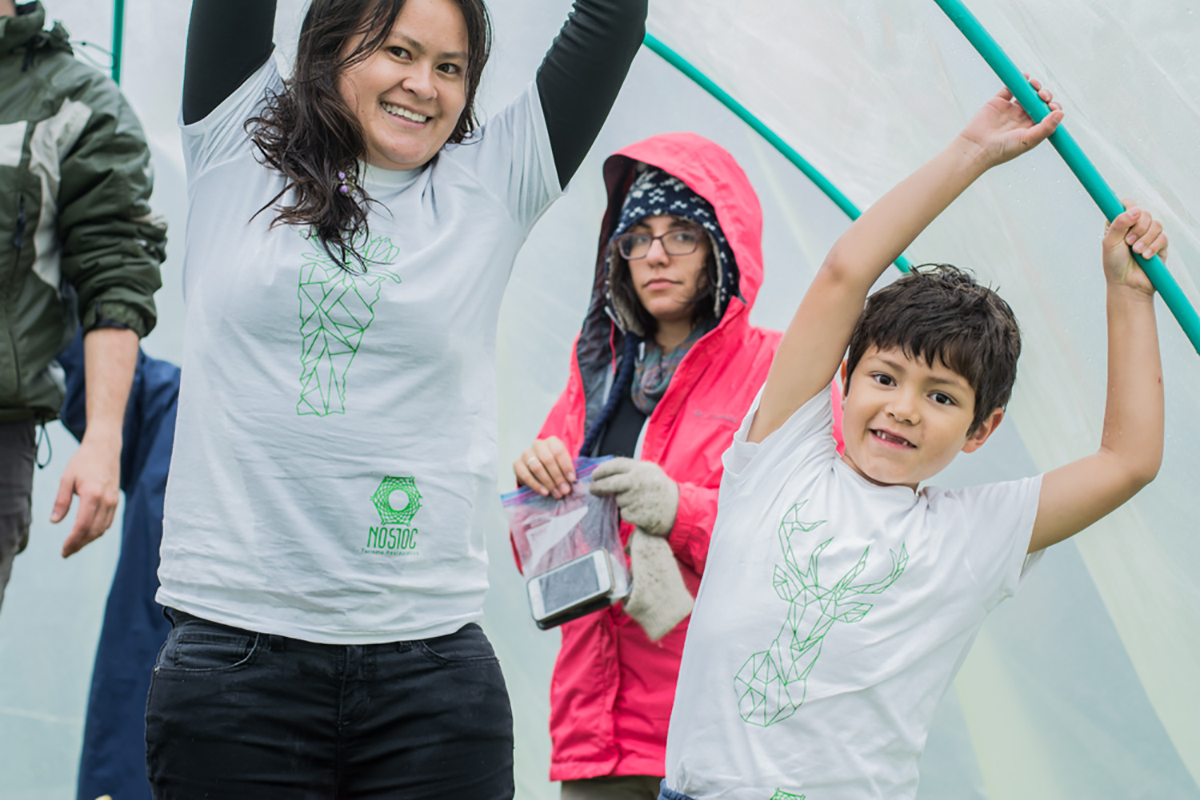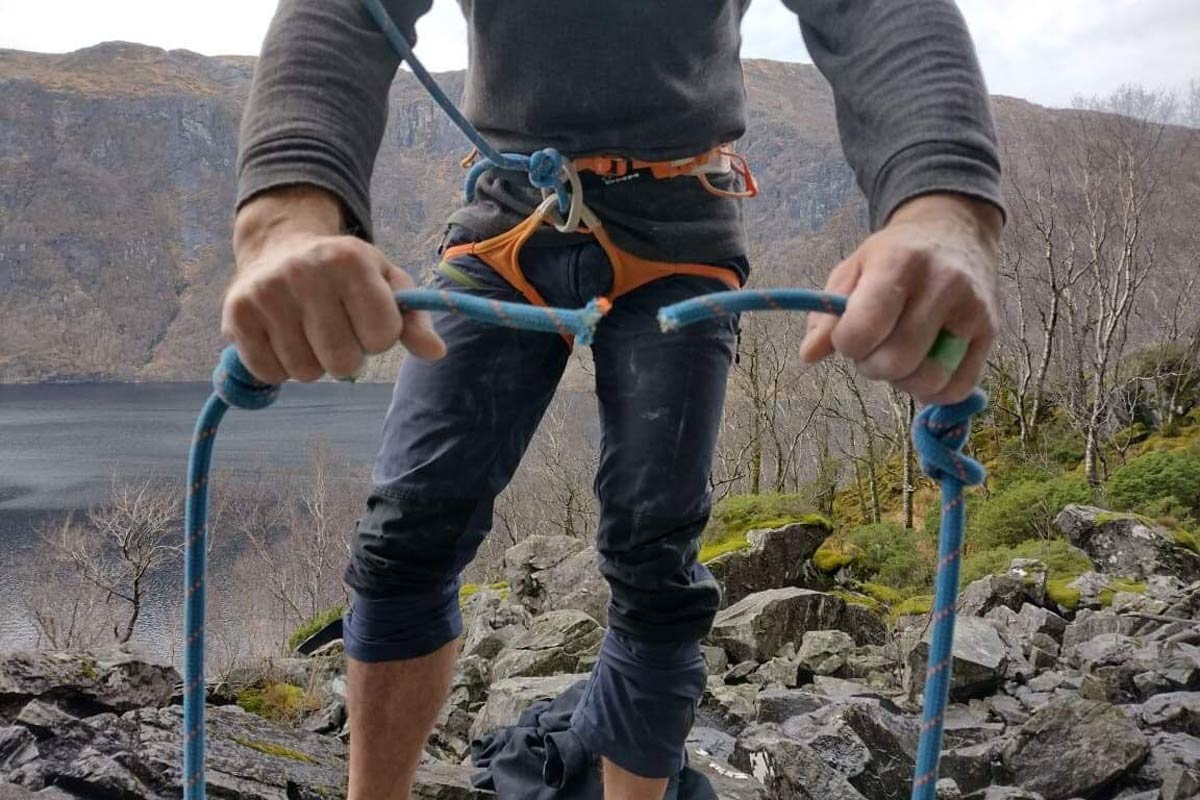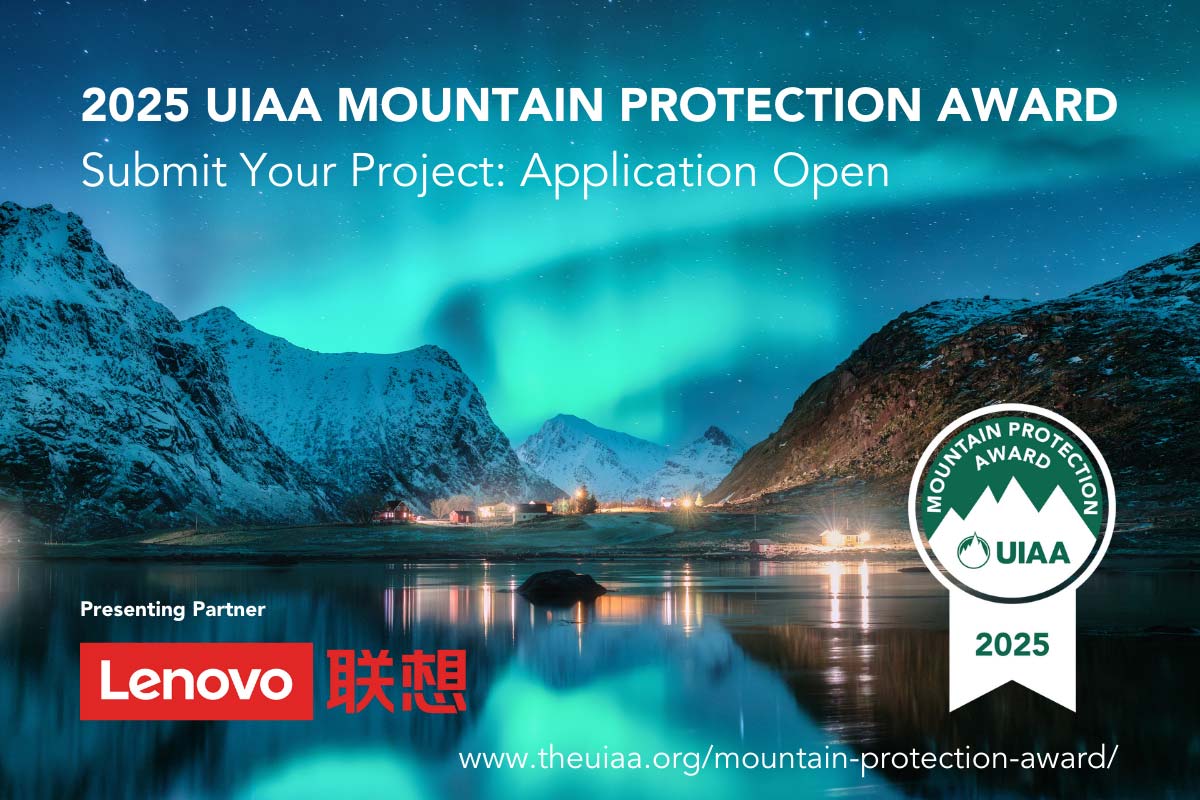Restorative Tourism Association – NOSTOC: Ecological restoration of the habitat of the spectacled bear
Project Status: January 2017 – December 2022
Location: Colombia
GOALS AND OBJECTIVES
General objective: To create a tourist attraction that contributes to the ecological restoration of the habitat of the Spectacled Bear (Tremarctos ornatus), through the construction of a Restorative Cell and the implementation of an ecological restoration plan for community-based nature tourism experiences. This, in turn, will contribute to the diversification of economic activities in El Palmar Farm, located in the vereda Mundonuevo, municipality of La Calera, department of Cundinamarca.
Specific objectives: To design and construct an infrastructure known as Restorative Cell (RC) that will be implemented as an interactive environmental classroom for tourist experiences.
To construct a nursery of native plants (such as Guaque, uva camarona) consumed by the Andean bear, in the RC in El Palmar Farm.
To design and implement an integral community-based restoration plan on the agricultural frontier, by planting the nursery seedlings in the CR in El Palmar Farm. Restorative Tourism aims to carry out and promote nature tourism that contributes to developing ecological restoration projects in strategic ecosystems in the country, such as high Andean forests and the páramo, in order to restore the landscape, increase connectivity between degraded areas, and reestablish ecosystem services and function. Tourism can be seen as an economic motor the drives diverse research projects and, thus, builds on strengths at an ecosystem and social level that contribute to páramo conservation in Colombia.
HOW DOES IT CONTRIBUTE TO MOUNTAIN PROTECTION
Andean páramos are ecosystems exclusive to the intertropical zone of America, distributed mainly in Colombia, Venezuela, Ecuador, and northern Peru, with a few additionally located in Costa Rica and Panama (Luteyn 1999 in Rojas – Zamora, 2013). Despite the extreme climate conditions of the páramo ecosystem, this region has been used for agrarian activities, wood extraction, and mining activities (Rojas – Zamora, 2013).
These productive activities have led to the transformation of the páramo vegetation, which, in turn, has modified the environmental conditions, flora composition, biological diversity, and plant and animal population and community structures; thereby, reducing the natural regeneration potential of this ecosystem (Rojas – Zamora, 2013).
Accordingly, it becomes necessary to generate actions that respond to the problematic represented by páramo disturbance, for which ecological restoration becomes a main alternative for Andean páramo recovery. Furthermore, it is of great importance that restoration not only involves an environmental component, but also a social component; thus, working alongside the community is an option that benefits both the ecosystem as well as the people who visit and inhabit the páramos.
Nature tourism is an alternative that offers the opportunity to obtain ecosystem goods and services in a sustainable manner, through the creation of links between visitors and the environment. These links allow the creation of social awareness towards ecosystem protection and contributes to its conservation through daily activities. Furthermore, restorative tourism, as we perceive it, is an economic activity aimed towards building coexistence between man and ecosystem, generating a lifestyle compatible with future generations. Restorative tourism strives to strengthen environmental education of the territory through an adequate and creative tourism infrastructure, necessary in order for people to lead a dignified and sustainable life with their territory and promote ecosystem conservation.
COLLABORATION WITH LOCAL COMMUNITIES
Local communities are directly benefited, since these are tourism initiatives that will develop integral proposals in community-based tourism for ecological restoration. This will strengthen the capacities of each family for offering tourism services that are sensible and responsible with the ecosystem, as well as generating an additional income from their daily activities, resulting from their contribution to páramo and Andean forest ecosystems conservation.
The Restorative Tourism Association NOSTOC supports each rural family that shows an interest in developing a tourism initiative, through the formulation of different tourist packages, training programs, and research projects aimed at locally strengthening the family’s economic activity. Each tourist package offers tourism experiences in which the traveler or visitor actively participates and creates awareness on the importance of conserving water-retaining ecosystems, as well as of each animal and plant that inhabits these landscapes. In addition, NOSTOC aims to generate a value chain where each family obtains benefit and offers a particular service or good for the visitors, thus, promoting a strong and collaborative social link for a common goal.
IMPLEMENTATION WITH LOCAL, REGIONAL AND NATIONAL AUTHORITIES
We wish to develop strategic alliances with local authorities, since we know that it is the responsibility of these entities to bring quality education to all of the municipalities and veredas located in strategic ecosystems, where lifestyles are not entirely environmentally sustainable, such as livestock farming. For this reason, NOSTOC encourages local authorities to support projects from NOSTOC, in order to strengthen sustainable tourism focused on protecting the natural assets that exist in these territories. We consider that tourism is an economic activity that strongly impacts the ecosystem, which is why we wish to focus our interdisciplinary knowledge towards nature conservation.
BEYOND BUSINESS AS USUAL
NOSTOC offers nature tourism experiences alongside an ecological or social restoration project called Restorative Cell. The Restorative Cell is a geodesic dome-shaped infrastructure built at each restoration site or rural farm, which carries out several functions: (i) to serve as an environmental education classroom, where visitors can receive environmental awareness talks and workshops regarding water, ecosystem, and Andean flora and fauna conservation; (ii) to serve as a native plants nursery in order to develop ecological restoration research projects in these strategic ecosystems, seeking to increase forest fragments. Each visitor will learn about these research projects and can even volunteer to plant and establish seedlings in the restoration plots. Finally, the RC is also a social restoration structure that supports teamwork, mutual collaboration, and knowledge-exchange between professionals, farmers, and tourists.
MANAGEMENT OF PROJECT ACTIVITY
Our tourism proposal builds upon an adequate management of the Colombian mountains, by proposing an economic activity focused on protecting the natural asset of the mountains. We believe that by promoting good management in nature tourism in disturbed strategic ecosystems, in terms of natural services such as water, oxygen, and carbon capture, among others, we can build a network of local guardian actors and sustainable producers, and teach consumers of the importance of contributing to Colombian páramo conservation through restorative tourism experiences.
VOLUNTEER OPPORTUNITIES
In addition to working with local communities in the páramo regions, aiming to build upon the communities’ self-management, NOSTOC offers the opportunity to contribute to restoring these mountain ecosystems through volunteer programs in ecological restoration. Furthermore, our restoration designs are open to collaborations with universities and research centers, through student internships that contribute to understanding how restoration benefits ecosystem connectivity, contributes to ecosystem services maintenance, and to the overall success of the restoration process.
CONTACT
Restorative Tourism Association – NOSTOC
E: turismorestaurativo@gmail.com




